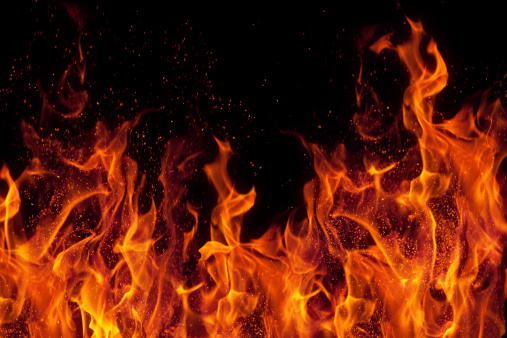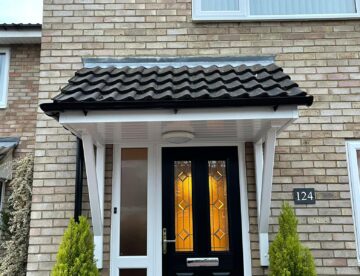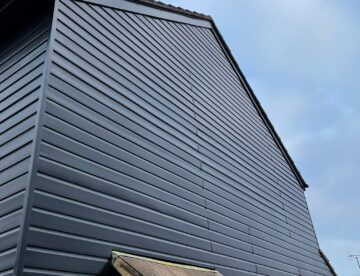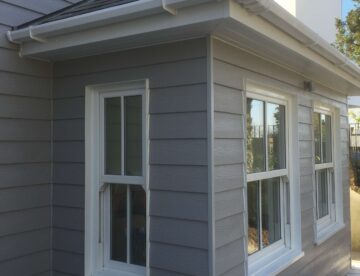James Hardie fibre cement cladding carries the highest possible fire rating: A2 s1-d0
Enhance Exteriors are suppliers and installers of James Hardie Cladding. James Hardie have just released the following, and we thought you would find it interesting.
If you would like to view this on their website please click here.
In case of a fire, you want to know that the walls of your house will protect you while your family seeks safety. Fire feasts on wood, and it melts vinyl, or uPVC, almost instantly. But James Hardie fibre cement cladding will not ignite when exposed to a direct flame, nor will it contribute fuel to a fire.
James Hardie cladding, weatherboards and building facades are made from advanced fibre cement material, which is non-combustible, compared to wood cladding and uPVC cladding. With a high density and dimensional stability, fibre cement is naturally resistant to adverse events such as fire, extreme weather conditions, pests, rot and fade.
The James Hardie cladding cladding is used all over the world, including fire prone areas where our products are specified to help resist fire attack from burning embers, radiant heat or flame contact. As the global leader in fibre cement technology, you can rest assured that when you use James Hardie cladding, you are using the highest fire rated (A2, s1-d0) facade cladding possible for a coloured exterior product.
Our non-combustible boards have been extensively fire tested under the EN 13501-1:2002 suite of fire tests for CE compliance, which examines material reactions in respect of:
- Direct flame applied
- Heat transmission
- Flame spread
- Smoke production
- Flaming particle emissions
All of our exterior products – Hardie® Plank and Hardie® Panel cladding – perform extremely well in these tests, achieving the maximum fire protection rating for a coloured facade product. Our fibre cement cladding would not contribute to the propagation of fire.
Fire Rating for Exterior Cladding
Your home is more than just a house. Home is about spending time with family or friends, enjoying your leisure time or relaxing after a hard day at the office. For many, a home is a sanctuary, and the protection it offers – shelter from the elements – is a critical part of keeping you and your family safe.
Choosing a cladding material that offers maximum fire resistance is important not just for homeowners, but for architects and builders too. But just how does the current regulation work, and as a homeowner, how do you ensure the best fire resistance protection for your home and your family?
Many external cladding materials currently on the market carry a minimum classification of ’surface spread of flame’, designed to slow and control any spread of fire. However only a few materials provide the higher classifications of either limited combustibility or non-combustibility.
The fire rating classification for cladding material ranges from A1 to F in accordance with European Standards EN-13501-1. These are shown below:
- A = Non-Combustible
- B = Very limited contribution to fire
- C = Limited contribution to fire
- D = Medium contribution to fire
- E = High contribution to fire
- F = Highly flammable
Fire Rating: Fibre cement cladding vs. uPVC/Vinyl cladding
uPVC or Vinyl cladding
PVC/uPVC or vinyl cladding products usually have a fire rating of C or D, which means this type of cladding is combustible. For comparison, most untreated wood cladding products have a fire rating of D. uPVC is composed of two building blocks, chlorine and ethylene from natural gas or petroleum. In other words, salt and oil. These raw materials are made into synthetic products called polymers, a form of plastic.
Due to the composition of PVC, being a plastic cladding material, it will melt and warp when exposed to fire. There are even extreme instances where uPVC cladding has melted from the reflection of the sun off Low-E glass windows. Although the spread of flames across the surface of uPVC might be limited, depending on the backing, PVC cladding will char and melt when exposed to fire. When PVC cladding burns, a chemical is realised called toxic dioxin, which is a hazard to the environment and humans.
Fibre Cement Cladding
Fibre cement cladding from James Hardie has a fire rating of A2, s1 d0, which is the highest possible fire rating for a coloured cladding board. This means that it is a non-combustible cladding and will not ignite when exposed to direct flame or extreme heat, nor will it contribute fuel to a fire.
New UK Legislation for Cladding
Last year the UK government introduced an amendment to The Building Regulations (Approved Document B: fire safety) regarding fire rating for cladding on buildings. This amendment now states that due to fire safety, all residential buildings now have to be built with A1 or A2-s1, d0
components in the external wall and cladding layer. This is at all heights.
So what does this mean for building designers and contractors?
This means some very significant changes to the way we design and construct buildings. From a materials perspective, good quality high fire rated insulation is a must.
In addition, exterior cladding materials need to be selected with safety and non-combustibility in mind. Fibre cement and terracotta cladding will continue to increase in popularity due to their fire resistant properties, alongside some ACM products (aluminium composite materials) which will also comply. uPVC, HPL (high pressure laminate) and untreated wood will unfortunately not.
The UK Government announces 400 million fund to replace unsafe ACM cladding
The UK Ministry of Housing, Communities & Local Government has announced a GBP 400 million fund to help local authorities’ councils and housing associations with the replacement of ACM cladding on buildings over 18 meters with cladding that is rated to at least A1 or A2 fire rating standard.
The reason given for creating the fund is that replacement of the cladding does become a budget issue for local authorities and housing associations that could interfere with the usual and essential building maintenance.
The fund is available to cover all reasonable costs for replacing ACM cladding with fire resistant cladding. A total of 158 buildings have been identified to be in need of replacing ACM cladding with A1 or A2 fire resistant cladding.
Hardie® Panel cladding is an alternative to ACM cladding as it/and carries the highest fire rating: A2, s1-d0. Hardie® Panel board is a non-combustible large format cladding suited for installation on high rise buildings over 18 meters.
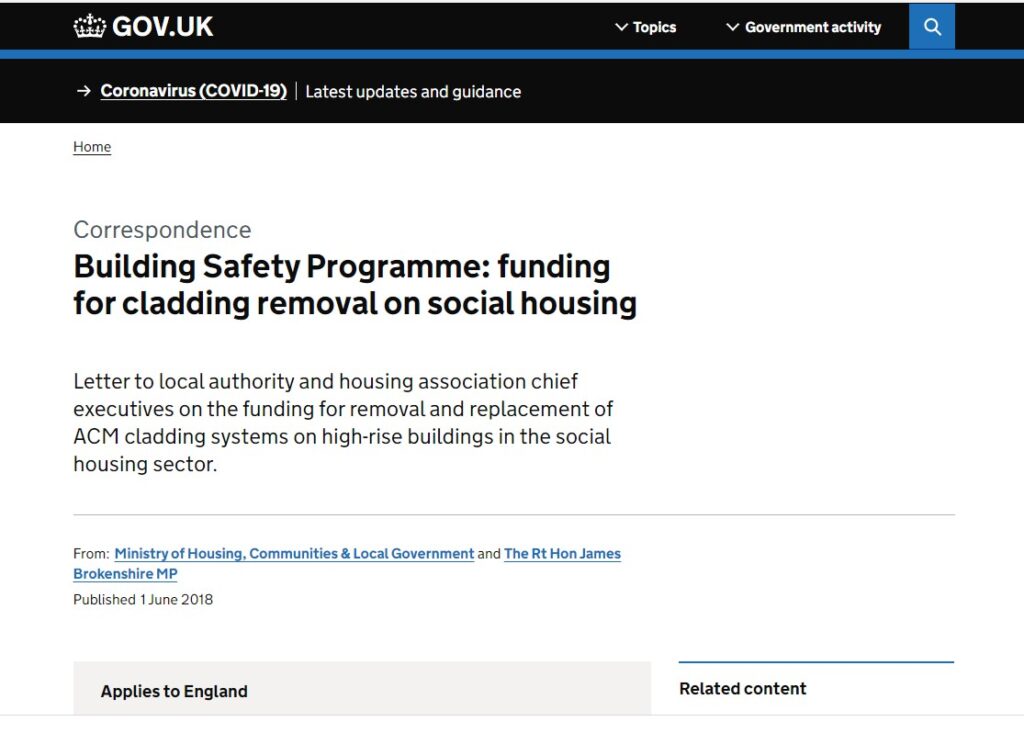
Read more about the UK Government fund to replace unsafe ACM cladding with fire resistant cladding.
You can contact us via this form:

